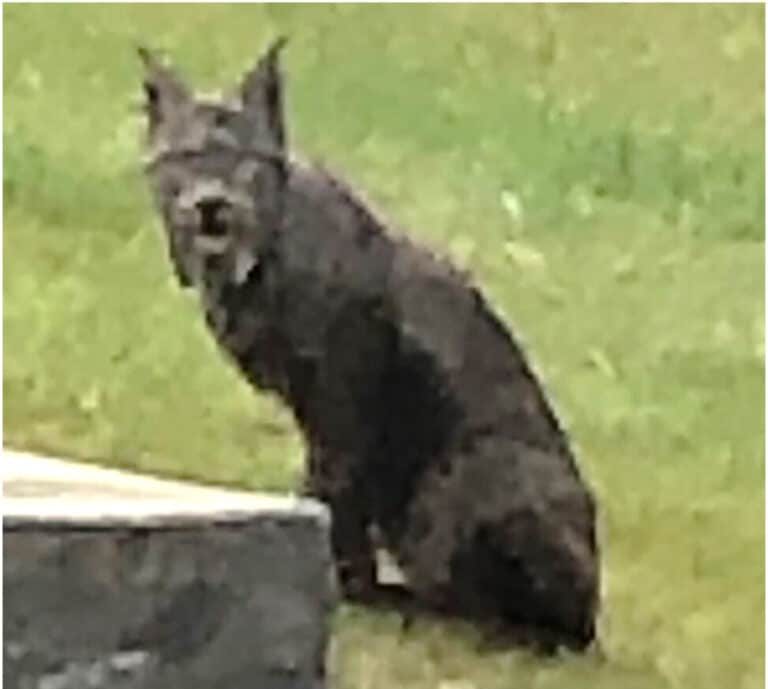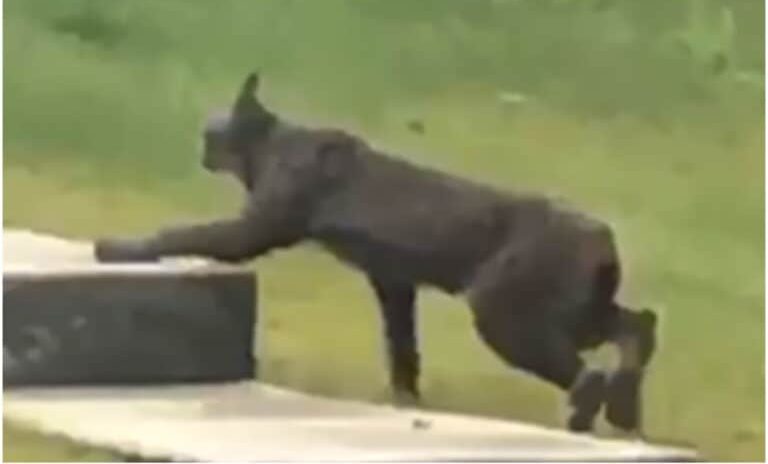The Canada Lynx, scientifically known as Lynx canadensis, is a North American lynx species found in Canada and parts of the United States.
Typically, the Canada Lynx has a light brownish-grey fur coat, but there have been occasional reports of individuals with black fur.
In 2022, a rare black-furred Canada lynx was captured on camera for the first time by a lucky individual.

Thomas Jung, a researcher at the University of Alberta and an employee of the Government of Yukon, filmed the black lynx on his cell phone.
This significant discovery was detailed in an article titled “Paint it Black: First Record of Melanism in Canada Lynx (Lynx canadensis)” published in Mammalia.

The video was shot in a rural residential area near Whitehorse, Yukon, showing the lynx from about 50 meters away. The animal moved away when a nearby dog barked.
The grainy video made it hard to distinguish many features.
Jung described the lynx as having a black coat with whitish-grey guard hairs and similar-colored hairs in its facial and dorsal regions. Most Canada lynx have silvery grey coats in winter, turning reddish-brown in summer. This lynx’s unique coloring makes it exceptionally rare.
Jung noted that such color variations could be evolutionary adaptations, either beneficial or disadvantageous.
Scientists are still determining whether melanism is advantageous or not. Jung believes the trait is maladaptive for the lynx, making it more visible in the snow during winter.
This unique creature’s sighting has amazed many. Share your thoughts in the comments!

